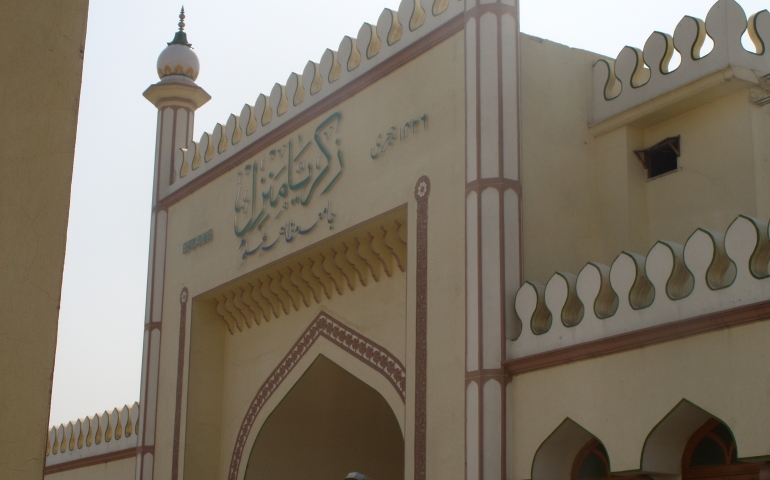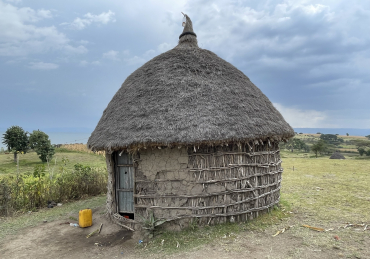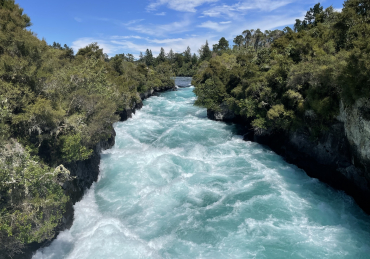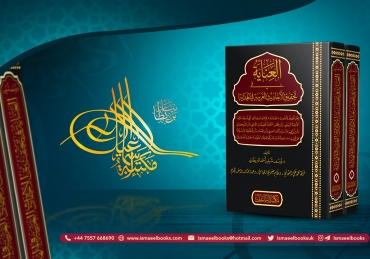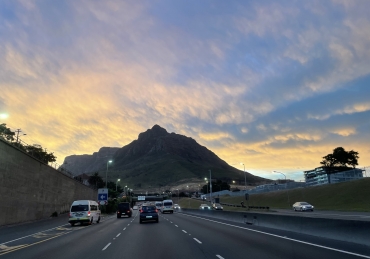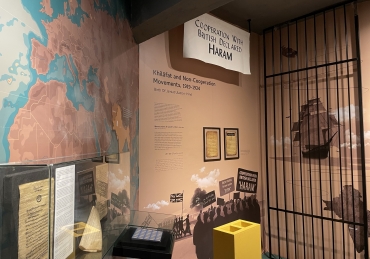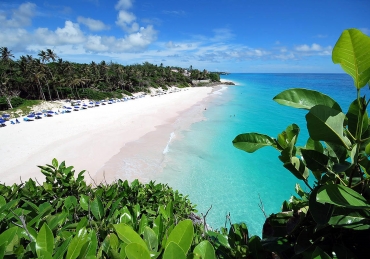The following is a daily account of Shaykh Yusuf Shabbir’s nine day visit to India. The page will be updated daily. This follows a trip made to India in October 2014, details of which are available on this link: http://islamicportal.co.uk/12-days-in-india-visit-to-7-states/.
بسم الله الرحمن الرحيم
Day 1 – Sunday 26 April 2015
Return to the Paradise of the World
I arrive at Delhi Airport at 10am after the eight hour direct flight from Birmingham. Some local colleagues receive me and inform me that they experienced the tremors of yesterday’s Nepal earthquake in Delhi for several minutes. People felt powerless and unable to do anything. Initial estimates suggest that up to 100 people have died in North Eastern parts of India. I also learn that Nepal has experienced another earthquake today. May Almighty Allah shower his mercy on the Ummah and enable us to turn towards him and repent.
I take the onward flight to Srinagar and arrive at 2pm. Srinagar is the capital of the Indian state of Kashmir which has been described as the paradise of the world. In October 2014, I visited the region in the aftermath of devastating floods that submerged the whole city and much of the region. At the time, the beautiful land of honey, saffron and cashmere was transformed into the land of destruction, devastation, and damage as water levels reached 20 feet high. Thousands were stranded at the time and the damage was unprecedented. The purpose of this visit to Kashmir is to review the situation and assess the rehabilitative efforts undertaken by governmental and non-governmental organisations.
We leave the airport with representatives of Kashmir Welfare Trust (KWT) and head towards the city. We start to visit different areas in the city and visit different projects. We visit Rakhi Arth where an eco friendly complex is being built that will accommodate more than 100 homes. The seven acre land was kindly donated to KWT by the government. We continue touring the city. It is clear that thousands of people are in need of assistance despite six months having passed. Many river banks remain broken and many houses remain structurally damaged. We visit houses where families are residing but are so dangerous they could collapse at any moment. Others do not have any homes to reside in. Families share with us their grief and sorrow. Everyone has a story to tell. We meet the elderly with medical problems. We meet the disabled and blind who share their tearful stories. We observe young girls moving cement and stones trying to rebuild their modest homes.
We also learn that over the past two weeks the region was affected by floods once again although the weather has improved over the past few days. Flooding is visible in many areas we visit. Many areas are damaged although the extent of the damage is limited compared to the September 2014 floods. We spend the whole day visiting affected areas; we visit more than 50 homes in 15 different areas. We walk over 7km as some areas are not accessible by car.
During the day, I delivered short speeches at a Darul Uloom as well as a local mosque. Unfortunately, ignorance and innovations are widespread. Much more effort is required. One elderly father shared with us his sad story. He shows us his house totally destroyed. He has four daughters; one is married but has been returned home after the birth of three daughters one after the other. This was disapproved by the husband. This is reminiscent of the type of ignorance that existed in the pre-Islam era.
It has been a long day with the travel and visiting different affected parts of Srinagar. As we rest late in the evening, strong thunderstorms and lightening has begun. The rain is pouring down and we can hear the strong wind and storm sounds. Only Almighty Allah knows the effects of this.
اللهم لا تقتلنا بغضبك ولا تهلكنا بعذابك وعافنا قبل ذلك ، اللهم صيّبا نافعا
Yusuf Shabbir
Srinagar, Kashmir
Day 2 – Monday 27 April 2015
How do the people of Kashmir survive?
It has been raining all night with strong thunderstorms and lightening. This is unusual here in spring. We make an early start after Fajr Ṣalāh as we head towards Boniyar 90km South West of Srinagar; a few kilometres from the border of Pakistan. Some of these isolated regions were affected the most by the floods in September 2014. Entire villages were destroyed as water levels rose in the valleys and swept away everything that came in its way. Limited support reaches such remote areas. My hosts at Kashmir Welfare Trust therefore decided to direct our limited resources to some of the most affected and most deserving areas.
The distance between Srinagar and Boniyar is less than 90km. However, the roads are in a poor condition and the transport infrastructure is weak. En route, we come across the village of Mir Gund where families are living in terrible conditions. A few kilometres from here, in Phallon-Ghat, the living conditions are much worse. The flood water remains and today’s continuous rainfall is exacerbating the problem.
After driving for a few hours in the valleys of Kashmir, navigating our way in between beautiful mountains and lush greenery, we arrive in Boniyar at 10.30. The ride is bumpy. There is a heavy military presence in the area.
In Boniyar, we are supporting fifteen families with new concrete houses that cost £4,500 each. Of these, ten houses are being funded by Human Appeal International and three by Nuneaton Muslim Society.
The houses are currently under construction and we meet with the local people who are currently living in squalid conditions. They describe how the whole valley was submerged in water and all houses were swept away by the water. A local army base was destroyed and vehicles swept away like toys. Many people are living in terrible conditions and require assistance. We wonder how these people survived the winter because as the rain is pouring down, we are feeling extremely cold and it is spring. In winter, the temperature plummets to minus 10 degrees Celsius.
Amidst the scenic surroundings, we can see signs of destruction; broken roads and crippled bridges. We leave Boniyar and head closer to the border. We travel a few kilometres and are informed of a mountain slide ahead. Almighty Allah protects us. Many people are walking on the roads in this weather fleeing from the slide.
We head back towards Srinagar and stop at a village known as Gund Boon in the Bandipora district. Much of the village was submerged by the floods. Thirty two homes were swept away. Two hundred homes were damaged. Six months on, many houses remain in a similar condition. The following is the damaged house of a widow.
The following is another damaged house in the village.
We return to Srinagar and rest for the evening.
Yusuf Shabbir
Srinagar, Kashmir
Day 3 – Tuesday 28 April 2015
How Islam spread in Kashmir 700 years ago
We start the day by visiting the Bilaliya Educational Institute that provides education to 578 pupils between the ages of three and 13. The school was established in 2006 in the aftermath of the earthquake and has made phenomenal progress in a few years. The behaviour of pupils and the academic progress as well as the vibrant spirituality programme is clearly visible and deserves recognition. A purpose built complex is being built which will cater for the growing needs of the school and its growing student population.
From here, we take the scenic car ride around the famous Dal Lake that has been described as the “Jewel in the crown of Kashmir”. The lake covers an area of 18 square kilometres whilst the shoreline is 15.5 kilometres. The lake is encompassed by Mughal era gardens, parks, houseboats and hotels. Scenic views of the lake are visible from the shore line Mughal gardens, such as the Nishat Bagh and Shalimar Bagh. During the winter season, the lake freezes as temperatures plummet to −11 °C.
Our next destination is the city of Anantnag, a two hour drive south of Srinagar. The city is also known as Islamabad; this is its original name. The region was also affected by the September 2014 floods. Here, we visit a housing project of Kashmir Welfare Trust.
We also visit an Islamic seminary Jamiatul Imam al-Kabir in Kokernag, in the outskirts of the city. The institute is named after late Mir Sayid Ali Hamdani (may Allah have mercy on him) who is regarded as the one who spread Islam in Kashmir. He was born in 1314 CE / 714 AH and passed away in 1384 CE / 786 AH. He was known with various titles including the Great Imam, Quṭb of the era and King of Hamdan. He belonged to the Kubrawiyyah order of Sufism. He authored over 170 books in Arabic and Persian; the most famous of these is Dhakhīrah al-Mulūk regarding political ethics and governance. He also wrote a commentary of Ibn Arabi’s Fuṣūṣ al-Ḥikam. Interestingly, he also wrote a book on the subject of physiognomy, known as ʿIlm al- Qiyāfah. This science also existed in the time of the Prophet (peace be upon him).
Mir Sayid Ali Hamdani also had a major influence in shaping the culture of the region. Among the 700 followers who accompanied him from his homeland in the Iran-Afghanistan region to Kashmir were men of arts and crafts who popularised shawl making, carpet manufacturing, cloth weaving and calligraphy. His cultural and economic legacy lives on whilst from a religious perspective Kashmir’s population is currently 95% Muslim. A well rounded individual; he was a saint, preacher, voyager, scholar, writer, visionary and a social reformer.
We proceed to a small village by the name of Hiller, 45 minutes drive south of Anantnag. The whole village was submerged in water. Here, we visit some houses funded by Ummah Welfare Trust. From here, we travel a further 30 kilometres south to a village in the mountain, Matti Bedihard. Here, Ummah Welfare Trust is funding 30 houses and a mosque.
To reach the area, we have to climb the mountain and navigate our way through the rough terrain. The people are extremely appreciative of the support they have received. They describe how their homes were swept away with the water and how they took refuge in the mountain living in tents. Many families continue to live in mud huts.
We understand from some of the places we visited today that they have been offered support from Christian missionary charities. Thankfully, the locals refused the assistance. Abusing the poverty of people in this manner and making aid conditional on conversion is not acceptable.
It has been another long day. We return to Srinagar late in the evening just before midnight.
Yusuf Shabbir
Srinagar, Kashmir
Day 4 – Wednesday 29 April 2015
From Srinagar to Saharanpur
Today is my final day in Kashmir. We begin the morning by attending an inter-school student competition held at Islamia School in the centre of Srinagar. The school is one of the oldest schools of Kashmir and was established over 100 years ago. It is housed in a prestigious complex.
I learn later in the day that Bilaliya Educational Institute won the competition.
From here we head to the Airport. After passing the multiple security checks at the heavily guarded Srinagar Airport, I take the flight to Delhi and arrive at 3pm. India has a thriving aviation industry that has made travel easy.
We proceed from the Airport to Meerut city in Uttar Pradesh (UP) to meet with Ḥaḍrat Mufti Fārūq Ṣāḥib. He is the disciple of the late Mufti Maḥmūd Ḥasan Gangohī (d. 1417/1996) and the compiler of Fatāwā Maḥmūdiyyah as well as the author of many books. Most recently he has authored a biography of Ḥaḍrat Mawlānā Rashīd Aḥmad Gangohī (d. 1323/1905) in Urdu. The journey takes nearly three hours. We spend an hour with Mufti Ṣāḥib and have dinner together. His son is critical in ICU following an accident two weeks ago. May Almighty Allah grant him a speedy recovery.
We proceed from Meerut towards the city of Saharanpur and arrive just before midnight.
Yusuf Shabbir
Saharanpur, UP
Day 5 – Thursday 30 April 2015
In the company of Muḥaddith al-ʿAṣr Shaykh al-Ḥadīth Mawlānā Muḥammad Yūnus Jownpūrī
Saharanpur is home to one of the world’s renown Islamic seminaries, Mazahirul Uloom. Some of the world’s leading scholars, of the past and present, are part of the institute’s alumni. They include Shaykh al-Ḥadīth Mawlānā Muḥammad Zakariyyā Muhājir Madnī (d. 1402/1982) who authored Faḍāʾil Aʿmāl and taught ḥadīth at this institute for over forty years.
They also include the Muḥaddith of this era, Shaykh al-Ḥadīth Mawlānā Muḥammad Yūnus Jownpūrī (b. 1355/1936 – ) who has been teaching ḥadīth at the institute for over 40 years. Shaykh Yūnus Ṣāḥib has dedicated his entire life in the service of Islamic sciences and in particular the science of ḥadīth. He followed in the footsteps of great scholars such as Shaykh al-Islam Ibn Taymiyah (d. 728/1328) and Imam Nawawī (d. 676/1277) who did not undertake marriage and dedicated their lives in the pursuit of knowledge and the service of Islam. Shaykh Yūnus Ṣāḥib was appointed by his teacher and mentor Shaykh al-Ḥadīth Mawlānā Muḥammad Zakariyyā Muhājir Madnī (d. 1402/1982) to teach Ṣaḥīḥ al-Bukhārī at Mazahirul Uloom which he has been doing for over four decades. His students include many leading scholars of the UK including Shaykh al-Ḥadīth Mawlānā Yūsuf Motālā (b. 1366/1946 – ), Shaykh al-Ḥadīth Mufti Shabbīr Aḥmad (b. 1376/1957 – ), Shaykh al-Ḥadīth Mufti ʿAbd al-Ṣamad (b. 1382/1962 – ) and Shaykh al-Ḥadīth Mawlānā Ayyūb Surtī.
This morning, I have the honour of spending a few hours with Shaykh Yūnus Ṣāḥib. Shaykh’s health deteriorated six months ago but with the will of Almighty Allah, his health has improved substantially. May Almighty Allah grant him complete recovery and keep his shade over us. After performing Fajr Ṣalāh with him, he teaches Ṣaḥīḥ al-Bukhārī for an hour. Thereafter, I sit with Shaykh in his room within the complex of the institute.
Shaykh Yūnus Ṣāḥib has a deep connection with Ṣaḥīḥ al-Bukhārī. As a result, my respected father Mufti Shabbīr Aḥmad sent with me al-Ifṣaḥ, a commentary of Ṣaḥīḥ al-Bukhārī and Ṣaḥīḥ Muslim by Imam Ibn Hubayrah (d. 560/1165), for Ḥaḍrat Shaykh. Upon receiving it, Shaykh said the author of this commentary is the great Ḥanbalī scholar ʿAwn al-Dīn Ibn Hubayrah al-Wazīr. He was extremely intelligent and some of his interpretations are full of insight and wisdom. For example, he has explained that Almighty Allah forgives the one who reads سبحان الله because a servant expresses that Almighty Allah is pure and free from all faults and weaknesses. In return, Allah forgives the faults and weaknesses of the servant.
Shaykh Yūnus Ṣāḥib emphasised on following the Sunnah and abstaining from innovations. During this short visit, he ensured I was fed breakfast and lunch and asked me a few times before leaving if I ate properly. I have experienced Shaykh’s profound hospitality, affection and generosity on my numerous visits to Saharanpur despite being only a small and young student of his.
Whilst spending some time with Shaykh, I also meet with Mufti Abrār Ṣāḥib of Canada who is helping Shaykh with the publication of Shaykh’s Arabic commentary on Ṣaḥīḥ al-Bukhārī. May Almighty Allah enable the completion of this valuable collection. I also meet with the Principal of Mazahirul Uloom, Ḥaḍrat Mawlānā Salmān Ṣāḥib and other senior teachers.
We leave Saharanpur at midday and head towards Delhi. We visit an Islamic seminary near the airport. Thereafter, we head to the Airport where I take a flight to Ahmedabad and arrive at 9.30 in the evening.
Yusuf Shabbir
Ahmedabad, Gujarat
Day 6 – Friday 1 May 2015
In the city of Ahmed Shah رحمة الله عليه
Ahmedabad is the largest city in the Indian state of Gujarat and its economic capital. The city was founded by the Muslim ruler Ahmed Shah I in 1411 CE who named it after four Ahmeds; himself, his teacher Shaykh Ahmed Khattu, Kazi Ahmed and Malik Ahmed. All were pious saints. Today, the city is home to seven million people of which 20% are Muslim. However, over 70% of the Muslim population live in poverty whilst 10% live in extreme dire conditions. In previous visits to Ahmedabad, I have visited some of the slums in the city that are home to some of the poorest families and that vividly illustrate the growing gap between the rich and the poor. As a result, many organisations including ours and Muslim Welfare Institute (MWI) support charitable projects in Ahmedabad and neighbouring areas to relieve the hardship of these families.
We begin the day early in the morning and head towards Vasnarathod, Dehgam, 40 km north of Ahmedabad. Here, we have recently commissioned the Masjid Aminah project on behalf of a family of Blackburn. The cost of the project is £6500.
There is currently no mosque in the village or neighbouring villages. There are over 50 families in and around the village who will benefit from the mosque with the will of Allah.
We return to Ahmedabad by mid morning and our next destination is the English medium Shama School in the highly condensed and populated area of Shahpur. The school serves 700 primary and secondary aged girls. A new build is under way that will cater for 1500 pupils.
We proceed from here to Haji Ismail Hospital and Dialysis Centre located in the Behrampura area of the city. The hospital was established with the support of MWI and other charities. It has 25 dialysis machines and serves patients from as far as Rajasthan several hundred kilometres away. Each session takes four hours and a kidney patient generally requires three sessions every week. There are many who cannot afford the treatment whilst some others live in rural areas and as a result are unable to access dialysis services. Those with a kidney problem appreciate the value of this service.
It is just after 11am as we head to Shama School in Danilimda that serves 1500 primary and secondary aged pupils. The school is heavily oversubscribed. This school was established with the support of MWI and others. The school has made phenomenal progress over the past decade since its inception.
I am also pleased to learn that a Nursing College is being established within the school complex which is an important development for the empowerment of the local communities.
Next, we head towards Shifa Hospital which is a flagship project located in the Jamalpur area. I have visited this hospital on several occasions. Here, I meet with patients undergoing a cataract operation with the support of MWI. A cataract operation costs £50 and takes ten minutes to complete. Such a small amount brings about a significant change in the life and sight of a person. However, many are unable to afford this nominal amount. I also see an operation in action. All glory and majesty belongs to Allah. It is incredible how a cataract is removed from the eye whilst a person is conscious. I also have the opportunity to meet with patients with different needs such as cancer treatment, kidney and liver transplant. They are extremely appreciative of the support provided by charities.
It is extremely hot in Ahmedabad around midday. We head towards Masjid Amina located in the Darbarnagar, Vatwa area of the city and perform Jumuʿah Ṣalāh. The mosque was built a few years ago. However, a second floor has been added by MWI recently to cater for the needs of the local communities.
This area of Ahmedabad is extremely poor. These are the houses or rather dwellings and tents some of the families reside in. It is shocking. Pictures do not do justice.
During the day, we also visit two other Masjid projects; the construction of Masjid Abidah and extension of Masjid Jumuah, both in the Juhapura area of the city. Both projects are being funded by MWI.
We return to Shifa Hospital where we have the opportunity to meet with orphans, widows and families living in difficulty. MWI is supporting 302 orphans who are provided with a monthly stipend and supported as necessary. We distribute funds to some orphans and bring a smile to their faces as well as their mothers.
It has been another long day. Time for some rest.
Yusuf Shabbir
Ahmedabad, Gujarat
Day 7 – Saturday 2 May 2015
“I am a Mufti, not a terrorist”
Last night, I was privileged to meet with Mufti ʿAbd al-Qayyūm of Ahmedabad. He spent 11 years in prison and was acquitted last year by the Supreme Court of India. Arrested in 2003, he was tortured through electrocution, beating, encounter firing and death threats. He was forced to confess to have taken part in a terrorist incident. In 2006, he was handed the death penalty. The Supreme Court acquitted him of all charges and rebuked the lower courts for not identifying the inconsistencies and contradictions in the evidence that formed the basis of the case.
Mufti ʿAbd al-Qayyūm’s case bears the marks of a corrupt two tier criminal justice system which was exposed through a lengthy court battle. During this period, his father passed away and he was unable to attend his funeral. He has recently authored a book regarding his 11 year ordeal which will be launched on 8th May next week in English, Gujarati and Urdu. The cover of the book includes the caption: “I am a Mufti and I am not a terrorist”. The book is definitely worth reading.
This morning, I left Ahmedabad early in the morning and headed to Jogvad, the village of my ancestors. Here, I meet with family and friends and deliver a speech at the local mosque emphasising on the importance of Daʿwah and distribution of inheritance according to the divine rules. This mosque was built by my paternal grandfather in 1966.
During the day, I also visit Yashfeen Hospital in Navsari and Alipore Hospital. For the first time, I also come across a new fruit locally known as Gadli, somewhat similar to Lychee. Later in the evening I also meet Ḥaḍrat Mawlānā Ṣāliḥ Ṣāḥib, a relative and a senior teacher of the famous Islamic seminary in Kafleta.
Yusuf Shabbir
Jogvad, Gujarat
Day 8 – Sunday 3 May 2015
Visit to Daman, the Portugal of India
We begin early in the morning with a visit to Aisha Siddiqa Primary School in Jogvad. The school began in 2007 from a home and relocated to a purpose made building in 2010. The school serves 300 pupils between the ages of 3 and 13 and has plans to expand and grow. This is my first visit to the school. It is pleasing to learn that the majority of the pupils are from the local village who have traditionally not accessed education or have had to travel out of the village to schools which are not conducive to their beliefs and values. The school offers a vibrant Islamic programme and has agreed to consider my recommendation to start an evening ʿĀlim course at the school premise.
Next we visit Darul Uloom Zakariya, Jogvad. The Darul Uloom was established by Ḥaḍrat Mawlānā Hāshim Jogvādī (b. 1363/1944 – ), a disciple of Shaykh al-Ḥadīth Mawlānā Muḥammad Zakariyyā Muhājir Madnī (d. 1402/1982). The institute serves 315 pupils and employs 28 staff. We meet with the principal Mawlānā Ilyās Ṣāḥib and discuss the challenges facing the institute.
It is worth noting that Jogvad is a small village. However, along with the two aforementioned institutions, it is home to an established girls’ Islamic seminary which has students from all over the country. It has established a good reputation and attracts students from the UK as well as other countries.
It is just after midday. We leave Jogvad and head towards Daman city, which is a 90 minute drive. Like Goa and Diu, Daman was ruled by the Portuguese for over 500 years due to its geographical location on the coast. The Portuguese rule lasted until 1961. It is worth noting that the Portuguese were primarily interested in trade and were welcomed by the local people. Unlike the British, they did not oppress or suppress the local people. This is why their rule lasted for a long period. They enjoyed a positive relationship with the local inhabitants. As a result, they agreed with the Indian government that all residents of the area would be eligible for Portuguese citizenship for three generations.
As we enter Daman, it is clearly distinguishable from the neighbouring state of Gujarat. The architecture and heritage left by the Portuguese is clearly visible. In fact, 10% of the population is Christian and there are areas where residents converse in Portuguese. The total population is 100,000. The percentage of Muslims is 15%.
We visit the Motidaman and Nanidaman fort and other local tourist sites. Daman attracts many tourists because of the coastal scenery and tourist attractions as well as the permission to drink alcohol unlike Gujarat. This perhaps explains why some Muslims in the UK with origins from Daman consume Alcohol. Daman also attracts businesses because it is directly controlled by central government which explains its lower taxes. Interestingly, poverty levels are also low here.
My hosts in Daman run several projects which we visit. They include the AIM English School that serves 155 pupils. This is the only Muslim school in the area. There are several Christian schools here. Other projects include a girls’ Islamic seminary and a supplementary Muslim school; these were established by Mawlānā ʿUmar Ṣāḥib Damānī, who was a student of Shaykh al-Islām Mawlānā Ḥusayn Aḥmad Madnī (d. 1377/1957), and who brought about great reform in the area.
Later in the evening, we participate in the first ever completion of Ṣaḥīḥ al-Bukhārī at the boys’ Darul Uloom in Daman. The final lecture is delivered by Mufti Aḥmad Khānpūrī (b. 1365/1946 – ). I meet with Mufti Ṣāḥib and extend an invitation to him to visit the UK.
We are now leaving Daman and heading towards Mumbai.
Yusuf Shabbir
Daman
Day 9 – Monday 4 May 2015
Final Day
During the day, we meet with the senior management of Ajmal Foundation and discuss the current situation in Assam and other states. The Nepal Earthquake tremors were felt in Assam, but the damage was limited. However, a cyclone over the past few weeks has destroyed 1000 homes.
We visit different places in Mumbai and head to the recently built state of the art Airport. We take the flight to Manchester via Jeddah.
Yusuf Shabbir
Jeddah, Saudi Arabia

